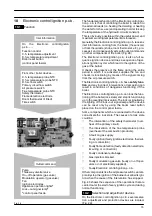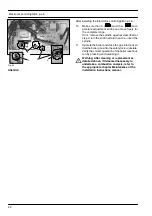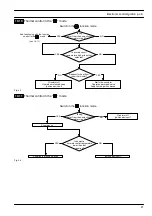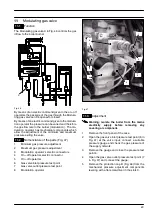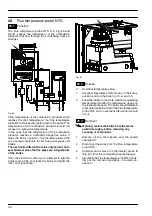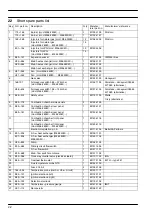
29
15
Temperature probe
15.1
Function
The Temperature probe has the function of converting
the temperature of the water in the hydraulic circuit
where it is installed into an electrical signal (resistance).
The relation between temperature and electrical resis-
tance is stated in Fig. 62.
500
1000
1500
2000
2500
3000
3500
4000
4500
5000
5500
6000
6500
7000
7500
8000
8500
9000
9500
10000
10500
11000
11500
12000
12500
20 25 30 35 40 45 50 55 60 65 70 75 80 85 90 95 100
Ω
˚
C
Fig. 62
On the boiler there are two Temperature probes. One
on the output of the primary heat exchanger (c.h. Tem-
perature probe)
A
in Fig. 63 and Fig. 64; one on the out-
put of the d.h.w. heat exchanger (d.h.w. Temperature
probe)
B
in Fig. 63 and Fig. 64.
c.h.
flow
c.h.
return
d.h.w.
inlet
d.h.w.
outlet
A
B
Fig. 63
15.2
Checks
n
Temperature---resistance relationship
Warning: isolate the boiler from the mains
electricity supply before removing any
covering or component.
Disconnect the cable from the Temperature probe.
Measure the temperature of the brass group where the
Temperature probe is located and check the electrical
resistance according to the graph in Fig. 62.
15.3
Removal
Warning: isolate the boiler from the mains
electricity supply before removing any
covering or component.
1
To remove the Temperature probes remove the
front panel of the case.
2
To remove the c.h. Temperature probe empty the
primary circuit of the boiler.
To remove the d.h.w. Temperature probe empty
the d.h.w. circuit of the boiler.
3
Remove the electric connector of the Tempera-
ture probe and unscrew it.
4
Reassemble the Temperature probe carrying out
the removal operations in reverse order.
A
B
Fig. 64

